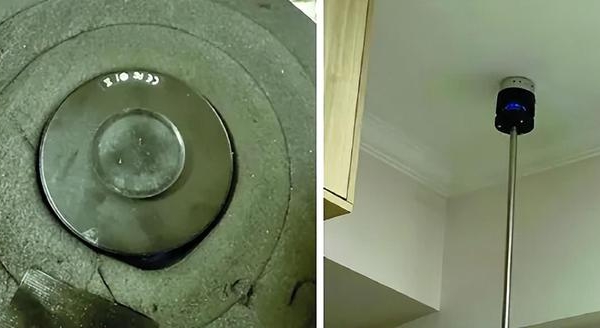Residents of two buildings in Shanghai are suffering from the torment of a “building shaker” – due to the noise “manufactured” upstairs, residents downstairs bought “building shakers” to fight back, waking up the entire building in the middle of the night… there are also disputes between residents upstairs and downstairs, each buying “building shakers” to blast through the floor, affecting a crowd of innocent neighbors.
According to a report by Xinmin Evening News on November 28th, Ms. Chen, a resident of Xiuyuan Community in Liangcheng Road, Hongkou District, Shanghai, said that for nearly a year, residents of the building she lives in have been living in constant fear. Every night, they are awakened by the sound of knocks, “thump… thump… thump.” Who is making the noise? It turns out it’s the “building shakers” causing a commotion.
The so-called “building shakers” are similar to a small vibration motor that, when in contact with the floor or wall, transmits vibrations without attenuation to the floor above or the opposite wall, emitting loud noise, which can even spread throughout the entire building.
Ms. Chen, who lives on the fourth floor, explained that in November last year, residents of Room 103 went door to door greeting residents, claiming that they were suffering greatly from the noise coming from Room 203, and would retaliate using “building shakers.”
And so, the nightmare began. Ms. Chen said that the entire building, with a total of six floors, each with four households, mostly elderly residents, would hear a rhythmic and uninterrupted low-frequency sound resembling a sewing machine past 11 p.m. The whole family was left feeling dizzy and anxious, unable to sleep well the whole night, on the verge of collapse.
Due to lack of rest, Ms. Chen’s husband is exhausted every day, “a few times when driving to work, feeling dizzy and disoriented.”
Mr. Wang, in his seventies on the third floor, already suffering from chronic illnesses such as hypertension, is now left physically and mentally exhausted by the “building shakers” every day.
Ms. Chen recounted that a joint coordination meeting was held last year, during which residents of Room 103 promised not to use “building shakers” again. But the peace was short-lived, as the knocking sounds returned soon after, with the frequency of the sounds continuously changing, sometimes fast, sometimes slow, with varying pitch.
Although the “building shakers” were no longer used, they were replaced with rubber mallets, randomly knocking by adjusting the direction, causing even more headaches.
Later, the source of conflict, the resident of Room 203, moved out. Just when neighbors breathed a sigh of relief, thinking things would calm down, the knocking sounds lingered on, tormenting them from midnight until early in the morning. Unable to bear it any longer, Ms. Chen sought communication on the first floor but was met with a response: “I knock in my own room, what’s it to you?”
According to the report, contact was made with the community committee. Staff members stated that the old building had poor sound insulation, and residents of Room 103 were dissatisfied with the noises coming from their upstairs neighbors, so they used “building shakers” to “fight noise with noise.” As a result, residents of Room 203 also took certain noise reduction measures, and eventually sold the house and moved out of the “troubled area,” but the conflict was far from resolved.
Despite attempts at reconciliation, the resident on the first floor remained elusive and unwilling to acknowledge the wall-knocking at night.
In Huayin Community, Lane 680, Hutai Road, Putuo District, Shanghai, residents of Rooms 304 and 404 initiated a “building shaker” battle. On the third floor lived an elderly couple who found the upstairs noise too disturbing, so they bought a “building shaker” in retaliation; on the fourth floor lived a young couple who, in retaliation for the behavior downstairs, also brought out a “building shaker” to counterattack.
Faced with the back-and-forth between the two sides, neighbors were overwhelmed. Mr. Chen, the landlord of Room 305, was the “first to bear the brunt.” Since the second half of this year, tenants have often complained to him that the upstairs and downstairs neighbors were engaging in a noise battle with “building shakers,” greatly affecting their normal rest.
After complaints from Mr. Chen, it was found that such neighborhood disturbance issues are often difficult to prove and define, with more emphasis on negotiation for resolution, but with minimal success.
The report pointed out that searching “building shaker” in many e-commerce platforms might not yield the desired results, but with a slight adjustment to the search keywords, many similar products ranging from 20 to over 300 yuan are displayed, with one hot-selling model having nearly 2000 units sold. Many merchants avoid keywords such as “building shaker” and “noise,” some even labeling them as “neighbor-friendly gadgets.”
Some netizens lamented that as the “building shakers” become more popular and increasingly used as a “menacing tool,” can they actually bring about peace and tranquility?
Lawyer Zhao Qiujin from Huiye Law Firm in Shanghai stated that the sales of “building shakers” are illegal.

